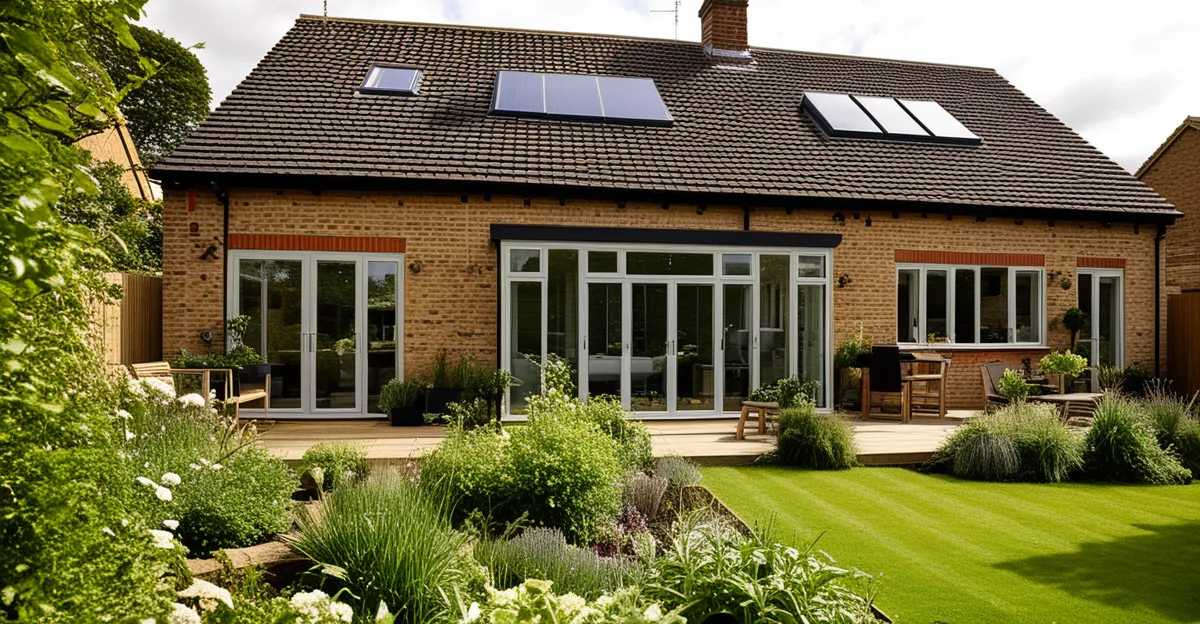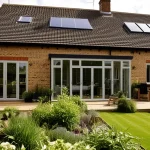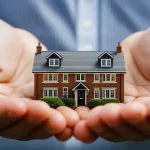Sustainable Living: Shaping the Future of UK Homes
Sustainable living in the UK centers on creating eco-friendly housing that reduces environmental impact while improving quality of life. At its core, it involves designing and maintaining homes that use resources responsibly, generate minimal waste, and embrace natural systems.
Emerging green building trends are driving this transformation. Developers increasingly prioritize insulation, water-saving technologies, and low-carbon materials to boost energy efficiency. Passive solar design and natural ventilation reduce reliance on fossil fuels, while urban tree planting and green roofs improve air quality and biodiversity.
Also read : Ways to Transform Your Living Space on a Budget
The future of homes in the UK hinges on integrating these sustainable elements seamlessly. Energy-efficient appliances and smart controls will optimize consumption, while innovative building techniques will lower construction waste and emissions. Beyond technology, the holistic approach includes considering residents’ health and well-being by using non-toxic materials and promoting access to natural light and green spaces.
With these shifts, sustainable living UK offers a blueprint not only for new builds but for retrofitting older properties. This dual approach accelerates the nationwide goal of carbon neutrality and paves the way for resilient, adaptable housing that meets environmental and societal needs.
Also read : How Can You Transform a Simple Room into a Cozy Sanctuary?
Sustainable Living: Shaping the Future of UK Homes
Sustainable living UK means designing eco-friendly housing that balances environmental responsibility with modern comfort. This involves embracing green building trends such as improved insulation, water conservation, renewable energy integration, and use of non-toxic, recycled materials. These elements reduce carbon footprints and support healthier living environments.
Current trends show a shift toward integrating nature and technology. For example, future homes incorporate passive solar design to harness natural heat and light, cutting energy use. Vegetated roofs and walls enhance biodiversity and air quality, while smart systems help monitor and optimize resource consumption.
The role of sustainability in transforming homes is multifaceted. It’s not just about energy savings; it also means selecting materials that minimize pollution and waste during construction and throughout a building’s life. Strong emphasis is placed on designing homes that adapt to climate challenges, ensuring resilience and longevity.
By prioritizing sustainable living UK, the housing sector can meet rising environmental goals while enhancing residents’ well-being—a vital step toward shaping truly sustainable future homes.
Practical Approaches to Sustainable Housing
Sustainable housing relies heavily on prioritizing energy efficiency. Homes designed with advanced insulation, efficient windows, and airtight construction reduce energy loss significantly. This lowers heating and cooling needs, directly cutting carbon emissions and utility bills. Integrating energy-efficient appliances and LED lighting further supports these savings by minimizing electricity consumption without compromising comfort.
The use of eco-friendly materials plays a crucial role in sustainable housing practices. Recycled timber, bamboo flooring, and low-VOC paints reduce environmental harm compared to conventional alternatives. These materials also improve indoor air quality and contribute to healthier living environments, key considerations in future homes.
Embracing renewable energy solutions like solar panels and heat pumps enables homes to generate clean power on-site. This reduces reliance on fossil fuels and supports the UK’s net-zero carbon goals. Combining these elements—energy efficiency, eco-friendly materials, and renewables—represents the foundation of sustainable housing practices. These strategies not only lower environmental impact but also enhance long-term home value and occupant well-being, making them essential for anyone interested in sustainable living UK.
Sustainable Living: Shaping the Future of UK Homes
Sustainable living UK focuses on evolving eco-friendly housing by integrating innovative green building trends that respond to environmental challenges. Defining sustainable living in this context means creating homes that do more than reduce carbon emissions—they actively enhance health, comfort, and biodiversity.
Current and emerging green building trends include advanced insulation techniques, rainwater harvesting systems, and the use of sustainable materials such as reclaimed wood and low-impact concrete alternatives. Passive design—orienting homes to maximize natural light and heat—remains crucial in shaping future homes that reduce energy needs while maintaining occupant comfort.
Sustainability in transforming homes transcends energy use. It involves resilience to climate impacts, such as flooding or heatwaves, through adaptive design choices like permeable surfaces and green roofs. These features contribute to urban biodiversity, improving ecosystems around residential areas.
Embracing sustainable living UK means developers and homeowners collaborate to blend tradition with innovation. This balance ensures that eco-friendly housing isn’t just a trend but a foundation for long-lasting, adaptable future homes that support well-being and environmental stewardship for generations.
Sustainable Living: Shaping the Future of UK Homes
Sustainable living UK means designing eco-friendly housing that balances environmental responsibility with the comfort and functionality expected in future homes. At its core, sustainable living integrates multiple green building trends such as advanced insulation, renewable energy integration, and water-efficient systems. These trends not only reduce energy use but also prioritize occupant health and connection to nature.
Current and emerging green building trends focus on adaptive design elements like passive solar orientation, rainwater harvesting, and the use of low-impact, recycled building materials. Such features play a vital role in shaping resilient, well-performing future homes fit for evolving climate conditions.
Sustainability transforms homes beyond energy metrics. It involves designing spaces that promote biodiversity with green roofs and walls, improving urban air quality and supporting local ecosystems. These elements reflect a broader vision of sustainable living UK, where homes actively contribute to environmental stewardship and wellbeing.
Ultimately, sustainable living harnesses technology, materials, and thoughtful design to redefine what eco-friendly housing means. It is a continuous evolution ensuring that future homes reduce carbon footprints while enhancing livability for current and future generations.
Sustainable Living: Shaping the Future of UK Homes
Sustainable living UK is defined by creating eco-friendly housing that integrates evolving green building trends aimed at reducing environmental impact while enhancing residents’ quality of life. Central to this concept is designing future homes that not only consume fewer resources but also foster a healthier and more resilient living environment.
Current and emerging trends focus on adaptive design—for instance, orienting homes to maximize passive solar gain, incorporating rainwater harvesting, and using recycled or low-impact materials. Such choices extend beyond energy efficiency to actively support urban biodiversity and climate resilience.
Sustainability’s role in transforming the UK housing landscape involves a holistic approach. It requires balancing technological advances with nature-based solutions that mitigate climate risks like flooding and heat stress. This approach ensures eco-friendly housing contributes positively to the ecosystem and resident well-being.
By emphasizing these principles, sustainable living UK guides the development of future homes designed for longevity and environmental stewardship, reflecting a shift from merely reducing footprint to enriching the living experience in every aspect.




